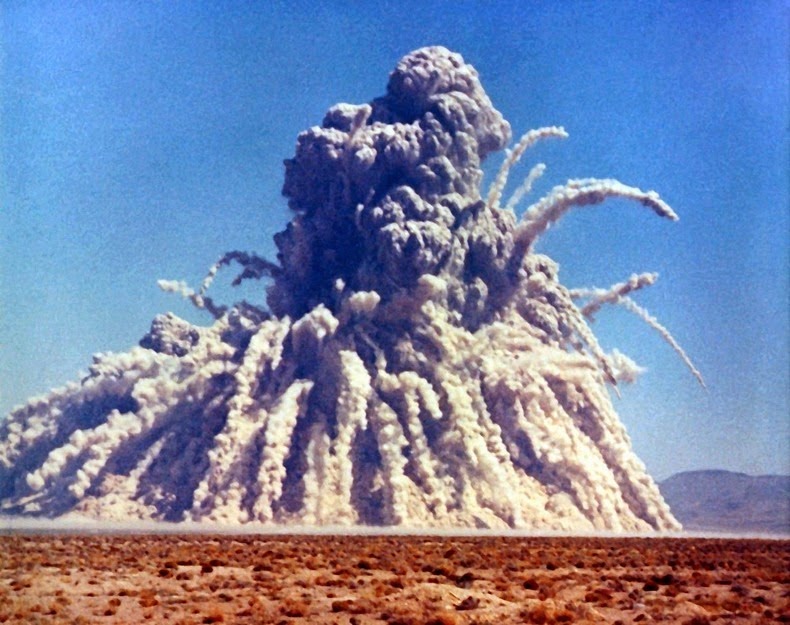
The device that produced the crater was buried 194 meters below the desert floor and had a yield equivalent to 104 kilotons of TNT or around eight Hiroshima bombs. The blast first lifted a dome of earth 90 meters above the desert floor before it vented at three seconds after detonation, exploding upward and outward displacing 12 million tons of earth. The resulting crater is 100 meters deep and 390 meters wide.
The explosion created fallout that affected more US residents than any other nuclear test, exposing more than 13 million people to radiation, although within 7 months of the detonation, the radiation had decayed to the point that the bottom of the crater could be safely walked upon with no protective clothing. Today, more than 10,000 visitors visit the crater every year through free monthly tours offered by the U.S. Department of Energy. An observation platform built on the rim of the crater allows tourists to peek into the crater below.
Negative impacts from Operation Plowshare’s 27 nuclear projects ultimately led to the program's termination in 1977, largely due to public opposition.
The Soviet Union continued to pursue the concept through their program “Nuclear Explosions for the National Economy” and carried out more than 150 nuclear test. The best known was Chagan – a test identical to Sedan - which created the artificial lake reservoir Lake Chagan.

The Sedan nuclear test on 6 July 1962.

Satellite image of the Sedan crater.

The Nevada Test Site is pockmarked by numerous nuclear tests. The Sedan crater is the largest among them.



Observation deck at Sedan Crater.
Source
